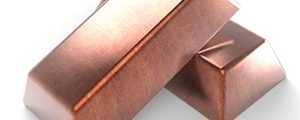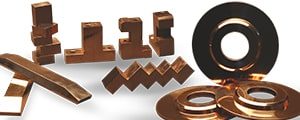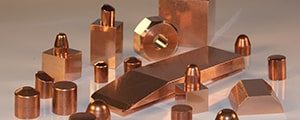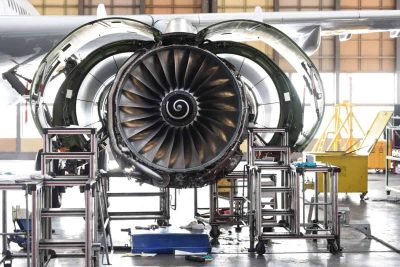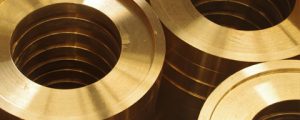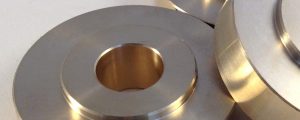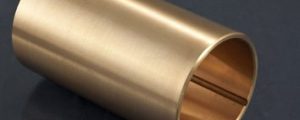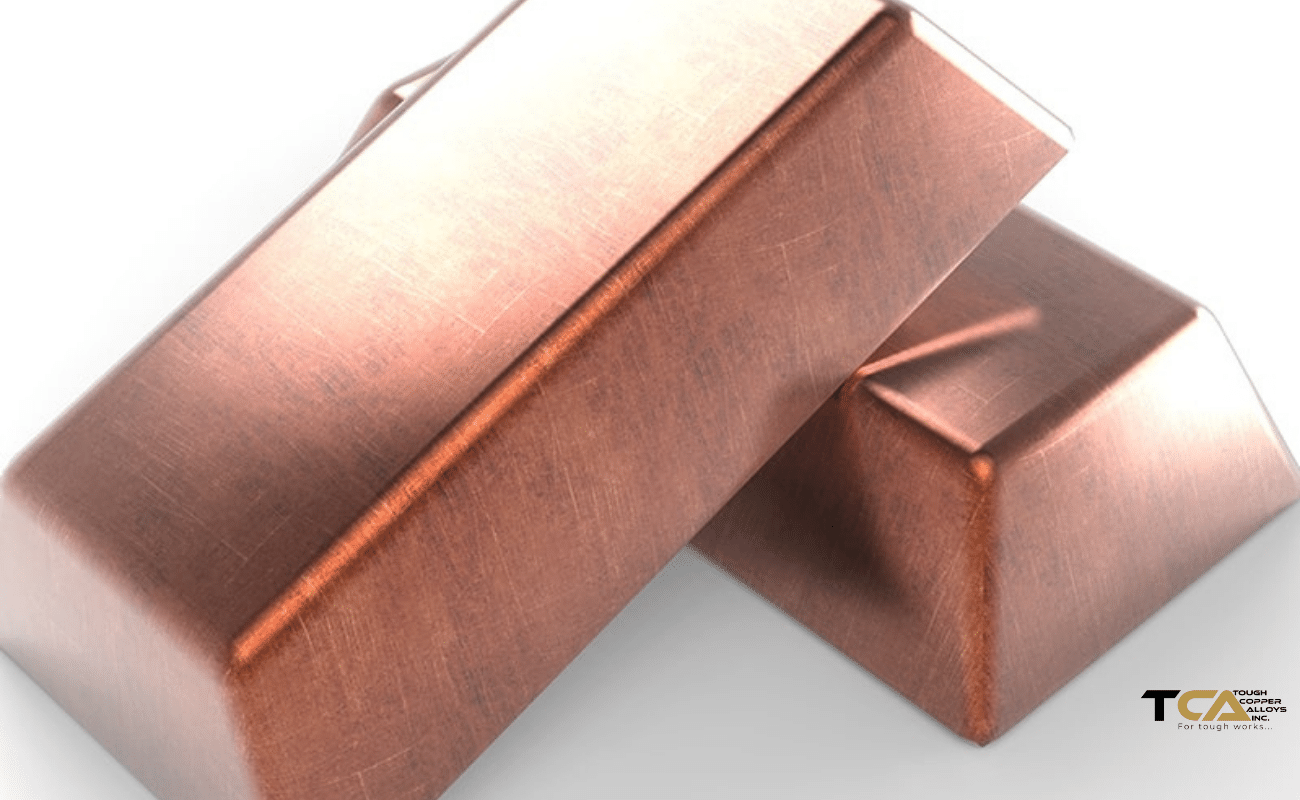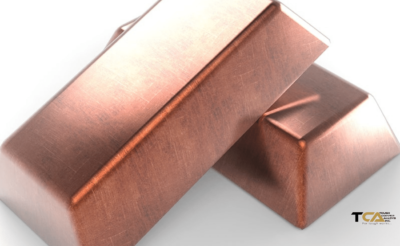What is “Cu-OFE” Material?
Cu-OFE, also known as oxygen-free copper, is a high-performance copper alloy that is commonly used in a variety of applications. This type of copper is known for its exceptional electrical conductivity and excellent corrosion resistance. It is made by a process called electrorefining, which removes impurities such as oxygen from the copper. This process results in a high-purity copper alloy that is made up of 99.99% copper.
One of the key properties of Cu-OFE is its high electrical conductivity. This makes it an ideal choice for applications where electrical performance is critical, such as in the production of wire, cable, and other electrical components. Additionally, Cu-OFE is also known for its excellent corrosion resistance. This makes it a suitable choice for applications where the alloy will be exposed to harsh environments or chemicals.
Cu-OFE is also commonly used in the production of electronic components, connectors, and other electrical equipment. It is also used in the production of high-purity copper foils, which are used in a variety of electronic applications such as LCD displays and solar cells.
The high purity of Cu-OFE also makes it an ideal choice for applications that require excellent thermal conductivity. This makes it an ideal choice for applications such as heat exchangers and cooling systems.
In summary, Cu-OFE is a high-performance copper alloy that is known for its exceptional electrical conductivity, excellent corrosion resistance and high thermal conductivity. Due to its purity, it’s commonly used in the production of electronic components, connectors, and other electrical equipment, as well as in the production of high-purity copper foils.
Application Areas & Industries
Cu-OFE, also known as oxygen-free copper, is a high-performance copper alloy that is commonly used in a variety of applications due to its exceptional electrical conductivity, excellent corrosion resistance, and high thermal conductivity. Its unique properties have made it a popular choice in a wide range of industries and application areas.
- Electrical and Electronic Industry: Cu-OFE is widely used in the electrical and electronic industry due to its high electrical conductivity and excellent corrosion resistance. It’s commonly used in the production of wire, cable, and other electrical components. Additionally, Cu-OFE is also commonly used in the production of electronic components, connectors, and other electrical equipment.
- Automotive Industry: Cu-OFE is also commonly used in the automotive industry due to its excellent electrical conductivity and corrosion resistance. It’s used in the production of various electrical components such as wiring harnesses and connectors.
- Aerospace Industry: Cu-OFE is also used in the aerospace industry, especially in applications that require high-performance materials that can withstand harsh environments. Its high electrical conductivity, excellent corrosion resistance, and high thermal conductivity make it a suitable choice for applications such as aircraft wiring and electrical components.
- Telecommunications Industry: Cu-OFE is commonly used in the telecommunications industry due to its high electrical conductivity and excellent corrosion resistance. It is commonly used in the production of high-purity copper foils, which are used in a variety of electronic applications such as LCD displays and solar cells.
- Renewable Energy Industry: Cu-OFE is also used in renewable energy industry for its high electrical conductivity and excellent corrosion resistance, it’s commonly used in the production of solar cells, wind turbine generators and other components.
In summary, Cu-OFE is a high-performance copper alloy that has a wide range of applications and industries due to its exceptional electrical conductivity, excellent corrosion resistance and high thermal conductivity. It’s commonly used in the electrical and electronic industry, automotive industry, aerospace industry, telecommunications industry, and renewable energy industry.
Common Fabrication Processes
Cu-OFE, also known as oxygen-free copper, is a high-performance copper alloy that is commonly used in a variety of applications due to its exceptional electrical conductivity, excellent corrosion resistance, and high thermal conductivity. To ensure that Cu-OFE is used to its full potential, it is important to understand the common fabrication processes that are used to shape and form this versatile alloy.
- Cold Working: Cold working is a common method used to fabricate Cu-OFE into different shapes and forms. This process involves shaping the alloy at room temperature using various techniques such as rolling, drawing, and bending. Cold working can increase the strength and hardness of Cu-OFE while maintaining its high electrical conductivity and excellent corrosion resistance.
- Hot Working: Hot working is another common method used to fabricate Cu-OFE. This process involves shaping the alloy at high temperatures using techniques such as forging and stamping. Hot working can increase the ductility and formability of Cu-OFE, making it an ideal choice for applications where the alloy needs to be shaped into complex or intricate forms.
- Welding: Welding is a popular method used to join Cu-OFE parts together. This process involves heating and fusing the edges of two pieces of Cu-OFE together to form a strong and seamless bond. Welding can be done using various methods such as TIG, MIG, and spot welding, depending on the application.
- Soldering: Soldering is a method used to join Cu-OFE parts together using a low-melting point alloy. This process involves heating the parts to be joined and then applying the solder alloy to the joint. Soldering is a popular method for joining small parts or for applications where the joint does not need to be as strong as a welded joint.
In summary, the common fabrication processes used for Cu-OFE include cold working, hot working, welding, and soldering. Each process has its own advantages and disadvantages, and the choice of the process will depend on the specific application and desired properties of the final product.
Chemical Composition
Cu-OFE, also known as oxygen-free copper, is a high-performance copper alloy that is commonly used in a variety of applications due to its exceptional electrical conductivity, excellent corrosion resistance, and high thermal conductivity. The unique properties of Cu-OFE are a result of its chemical composition, which includes copper, oxygen, and other impurities.
Cu-OFE is composed primarily of copper (99.99%) and trace amounts of impurities. The impurities are typically made up of small amounts of oxygen, sulfur, and other elements. These impurities are removed during the electrorefining process, which results in a high-purity copper alloy.
The high purity of Cu-OFE is one of the key reasons why it is so widely used in a variety of applications. The absence of impurities such as oxygen in the alloy allows for excellent electrical conductivity, excellent corrosion resistance, and high thermal conductivity.
It’s important to note that the exact chemical composition of Cu-OFE can vary depending on the manufacturer and the specific application. Therefore, it’s always best to consult the supplier or the manufacturer for the exact composition of the alloy.
In summary, the chemical composition of Cu-OFE is primarily composed of copper, and other trace impurities that are removed during the electrorefining process. The high purity of Cu-OFE is what makes it an ideal choice for a wide range of applications that require excellent electrical conductivity, excellent corrosion resistance, and high thermal conductivity.
| Elements | ||||||||||
|---|---|---|---|---|---|---|---|---|---|---|
| Cu(1,2,3) | Pb | Zn | Fe | P | Ag | As | O | Sb | Te | |
| (1) This is a high conductivity copper which has, in the annealed condition a minimum conductivity of 100% IACS except for Alloy C10100 which has a minimum conductivity of 101% IACS. (2) Cu is determined by the difference between the impurity total and 100 %. For alloy C10100 the Cu value is exclusive of Ag. (3) The following additional impurity maximum limits shall apply: Bi 1ppm (0.0001%); Cd 1ppm (0.0001%); Mn 0.5ppm (0.00005%); Ni 10ppm (0.0010%); Se 3ppm (0.0003%); S 15ppm (0.0015%); Sn 2ppm (0.0002). |
||||||||||
| Min (%) | 99.99 | |||||||||
| Max (%) | 0.0005 | 0.0001 | 0.0010 | 0.0003 | 0.0025 | 0.0005 | 0.0005 | 0.0004 | 0.0002 | |
Physical Properties
Cu-OFE, also known as oxygen-free copper, is a high-performance copper alloy that is commonly used in a variety of applications due to its exceptional electrical conductivity, excellent corrosion resistance, and high thermal conductivity. These properties are a result of the unique physical characteristics of the alloy.
- Electrical Conductivity: Cu-OFE has an extremely high electrical conductivity, which makes it an ideal choice for applications where electrical performance is critical. It has a conductivity value of around 100% IACS, which is much higher than other types of copper alloys and even higher than annealed copper.
- Corrosion Resistance: Cu-OFE has excellent corrosion resistance, which makes it suitable for applications where the alloy will be exposed to harsh environments or chemicals. This property is due to the absence of oxygen in the alloy, which eliminates the formation of copper oxide, a common cause of corrosion.
- Thermal Conductivity: Cu-OFE has a high thermal conductivity, which makes it an ideal choice for applications such as heat exchangers and cooling systems. It has a thermal conductivity value of around 401 W/mK, which is higher than other types of copper alloys.
- Density: Cu-OFE has a density of around 8.9 g/cm3.
- Melting Point: Cu-OFE has a melting point of around 1083°C.
In summary, Cu-OFE is known for its exceptional electrical conductivity, excellent corrosion resistance, high thermal conductivity, and high density, and a relatively high melting point. These physical properties make it an ideal choice for a wide range of applications that require high-performance materials that can withstand harsh environments and demanding conditions.
Fabrication Properties
Cu-OFE, also known as oxygen-free copper, is a high-performance copper alloy that is commonly used in a variety of applications due to its exceptional electrical conductivity, excellent corrosion resistance, and high thermal conductivity. To take full advantage of the unique properties of Cu-OFE, it’s important to understand its fabrication properties.
- Formability: Cu-OFE has good formability, which means that it can be easily shaped into different forms without cracking or breaking. This property makes it an ideal choice for applications where the alloy needs to be shaped into complex or intricate forms.
- Machinability: Cu-OFE has good machinability, which means that it can be easily cut, drilled, and machined using conventional machine tools. This property makes it an ideal choice for applications where the alloy needs to be machined to precise tolerances.
- Weldability: Cu-OFE has good weldability, which means that it can be easily welded using various methods such as TIG, MIG, and spot welding. This property makes it an ideal choice for applications where the alloy needs to be joined together.
- Solderability: Cu-OFE has good solderability, which means that it can be easily soldered using a low-melting point alloy. This property makes it an ideal choice for applications where the alloy needs to be joined together using a solder joint.
- Anodizing: Cu-OFE cannot be anodized.
In summary, Cu-OFE has good formability, machinability, weldability, and solderability. These fabrication properties make it an ideal choice for a wide range of applications that require high-performance materials that can be easily shaped, machined, welded and soldered to precise tolerances. It’s also important to note that Cu-OFE cannot be anodized.
Applicable Specifications
Cu-OFE, also known as oxygen-free copper, is a high-performance copper alloy that is commonly used in a variety of applications due to its exceptional electrical conductivity, excellent corrosion resistance, and high thermal conductivity. To ensure that Cu-OFE is used to its full potential, it is important to understand the industry specifications that apply to this versatile alloy.
- ASTM B124: This specification covers the requirements for copper alloy sand castings for general applications. Cu-OFE can be used to meet the requirements of this specification.
- ASTM B187: This specification covers the requirements for copper alloy rod, bar, and wire for electrical purposes. Cu-OFE can be used to meet the requirements of this specification.
- ASTM B152: This specification covers the requirements for copper sheet, strip, plate, and rolled bar for electrical purposes. Cu-OFE can be used to meet the requirements of this specification.
- ASTM B187: This specification covers the requirements for copper alloy rod, bar, and wire for electrical purposes. Cu-OFE can be used to meet the requirements of this specification.
- ASTM B133: This specification covers the requirements for copper alloy sand castings for electrical equipment parts. Cu-OFE can be used to meet the requirements of this specification.
It’s important to note that there are other industry specifications that may apply to Cu-OFE depending on the specific application and the desired properties of the final product. Therefore, it’s always best to consult the supplier or the manufacturer for the specific industry specifications that apply to the alloy.
In summary, Cu-OFE can be used to meet the requirements of several industry specifications such as ASTM B124, ASTM B187, ASTM B152, ASTM B187, and ASTM B133. To ensure that Cu-OFE is used to its full potential, it’s important to understand the industry specifications that apply to this versatile alloy and consult the supplier or the manufacturer for the specific industry specifications that apply to the alloy.
Thermal Features
Thermal properties of Cu-OFE (Oxygen-Free Copper) include:
- Thermal Conductivity: Cu-OFE has a high thermal conductivity, which is the ability of a material to transfer heat. It has a thermal conductivity value of around 401 W/mK, which is higher than other types of copper alloys.
- Thermal Expansion: Cu-OFE has a relatively low coefficient of thermal expansion, which is the change in size or shape of a material as it is heated or cooled. This property makes it an ideal choice for applications where the alloy needs to be used in high-temperature environments and must maintain stability.
- Melting Point: Cu-OFE has a relatively high melting point of around 1083°C.
- Specific Heat: The specific heat of Cu-OFE is around 385 J/kg.°K which is the amount of heat required to raise the temperature of a unit mass of a substance by one degree.
- Thermal Shock Resistance: Cu-OFE has a high thermal shock resistance, which means it has the ability to withstand rapid temperature changes without cracking or breaking.
In summary, Cu-OFE has high thermal conductivity, low coefficient of thermal expansion, high melting point, high specific heat and high thermal shock resistance which makes it suitable for application that requires high-temperature environments and thermal stability.
Typical Uses
Product Category: Electrical and Electronic Industry
Product: Wire, Cable, and other Electrical Components
Reason Category: High Electrical Conductivity
Reason: Cu-OFE has a high electrical conductivity, making it an ideal choice for the production of wire and cable, and other electrical components that require good electrical conductivity.
Product Category: Automotive Industry
Product: Wiring Harnesses and Connectors
Reason Category: Corrosion Resistance
Reason: Cu-OFE has excellent corrosion resistance, making it an ideal choice for the production of wiring harnesses and connectors that must function in harsh environments.
Product Category: Aerospace Industry
Product: Aircraft Wiring and Electrical Components
Reason Category: High Thermal Conductivity
Reason: Cu-OFE has a high thermal conductivity, making it an ideal choice for the production of aircraft wiring and electrical components that must function in high-temperature environments.
Product Category: Telecommunications Industry
Product: High-Purity Copper Foils
Reason Category: Purity
Reason: Cu-OFE has high purity, making it an ideal choice for the production of high-purity copper foils that are used in a variety of electronic applications such as LCD displays and solar cells.
Product Category: Renewable Energy Industry
Product: Solar Cells and Wind Turbine Generators
Reason Category: High Electrical Conductivity
Reason: Cu-OFE has a high electrical conductivity, making it an ideal choice for the production of solar cells and wind turbine generators that require good electrical conductivity for efficient energy conversion.
Alternates
There are several materials that can be used as alternatives to Cu-OFE, depending on the specific application and the desired properties of the final product. Some of the most common alternatives include:
- Silver: Silver has a higher electrical conductivity than Cu-OFE and is often used in applications where high conductivity is required, such as in electronic components and connectors. However, silver is more expensive than Cu-OFE and is also more prone to corrosion.
- Aluminum: Aluminum has a lower thermal conductivity than Cu-OFE, but it is also much cheaper. It is commonly used as a substitute for Cu-OFE in applications where cost is a major concern.
- Copper Alloys: There are other copper alloys that have properties similar to Cu-OFE, such as C10100, C10200, and C11000. These alloys have a lower purity than Cu-OFE but they can be used in applications where high purity is not a requirement.
- Gold: Gold has a higher electrical conductivity than Cu-OFE and is resistant to corrosion, but like silver, it is much more expensive.
- Nickel-plated Copper: Nickel-plated Copper can also be used as an alternative to Cu-OFE in applications where corrosion resistance is important. The nickel plating provides additional protection against corrosion and also enhances the electrical conductivity of the copper.
It’s important to note that the selection of alternative material depends on the specific application, desired properties, and cost. Cu-OFE is a high-performance copper alloy, so it’s essential to consider the trade-offs of other materials before making a decision.

